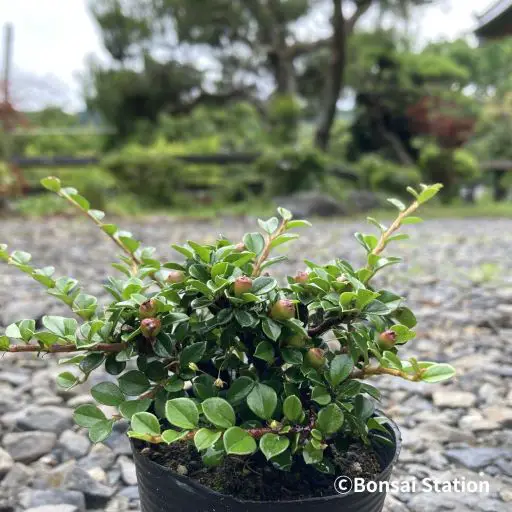Cotoneaster is strong and easy to grow that is perfect for bonsai beginners. With small leaves, flowers, and fruits, it is ideal for mini bonsai as well. Here are some of the things you should know before growing.
Cotoneaster bonsai care: summery table
| Common name | Rockspray cotoneaster |
| Latin name | Cotoneaster horizontalis |
| Native area | Asia, Europe, North Africa |
| Cold tolerance | High |
| Heat tolerance | Moderate |
| Drought tolerance | High |
| Sun exposure | Full sun to partial shade |
| Soil mix | Akadama: 70% Sand: 20% Organic compost: 10% |
| Repotting | Every 1-2 years |
| Fertilization | Twice each in Apr, May, Sept, Oct |
| Watering | Once/day in spring and fall 2 times/day in summer Once every 2 days in winter |
| Life span | Over 50 years |
Cotoneaster bonsai care
Placing

Cotoneaster bonsai should be kept in a place with plenty of sunlight and enough airflow. Cotoneaster is a photophilic plant. It is OK to place them in the partial shade outside but not inside your house. Cotoneaster is not an indoor plant and cannot thrive well where there is not enough sunlight and airflow.
Repotting
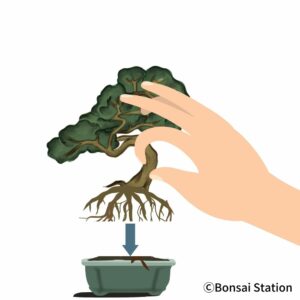
Repotting of cotoneaster bonsai trees should be done once every year or every two years in early spring when they wake up from their dormant state. As cotoneaster blooms with a lot of flowers and bears fruits, it is important to refresh the soil frequently so that the trees continue to grow healthy.
The best soil mix for cotoneaster bonsai is;
- Akadama: 70%
- Sand: 20%
- Organic compost: 10%
If you try to grow a cotoneaster bonsai from cuttings, the first repotting should be done in the second year of planting cuttings. Remove a little bit of the soil around the roots and trim the roots that grow straight down. You can also prune the branches and trunks which deform the tree style you are training the tree to be.
When cotoneaster bonsai grows older after 3 to 4 years from cuttings, remove about one-third of the old soil and prune the roots from that line when repotting. This is a general process of repotting after the cotoneaster bonsai tree is styled.
Watering

As a general guide, cotoneaster bonsai should be watered;
- Once/day in spring and fall
- Twice/day in summer
- Once every 2 days in winter
That said, you can water it when you see the soil surface is dried and look whitish. Cotoneaster as species is pretty drought resistant. Even if the soil in the pot is dried up for a short period of time, the flowers and the fruits do not fall off or the branches do not die back. If you live in a hot, dry climate, cotoneaster bonsai is the one for you.
Fertilizing
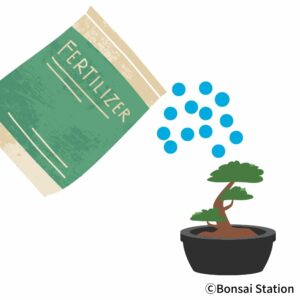
Cotoneaster bonsai trees absorb fertilizer well no matter what kind is given to them. Unlike other bonsai species, giving too much fertilizers would rarely lead to fertilizer burn for them. Leaves and branches grow healthy and vigorously with fertilizers.
On the other hand, if cotoneaster bonsai trees lack fertilizers, they never grow much due to malnutrition. A lack of fertilizers can lead to fewer flowers and fruits as well. Thus, over-fertilizing is better for cotoneaster bonsai than under-fertilizing.
The sufficient frequency of fertilizing would be once every 15 days starting in spring. Stop fertilizing while flowering and in summer. Start fertilizing again in fall before winter comes.
- Fertilization of cotoneaster bonsai: Use diluted liquid fertilizer (2x the labeled dilution), fertilize twice each in Apr, May, Sept, Oct
Pruning
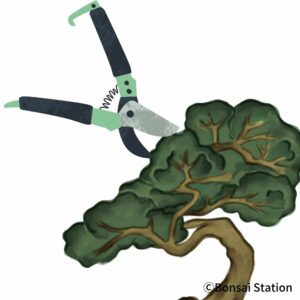
Unlike other bonsai species whose pruning should done be at a specific time of the year, cotoneaster bonsai pruning is to be done when it is needed. Numerous sprouts come out in spring and the beginning of summer, of which unwanted ones are to be trimmed constantly as they come out.
As the new branches that do not bear fruit grow considerably, you should prune the elongated branches from the node that you will not use for styling the tree.
Good branches can be left to grow until the end of May, to about 2 inches (5 cm) in length to thicken the branches. Prune then, leaving a few leaves. The branches will start to grow again after pruning.
Cotoneaster is strong and responds well to hard pruning. If you do not like the styling of your cotoneaster bonsai tree, you can cut back pretty hard to style it as you like. The hard pruning is best done in spring when the tree has a lot of time to recover afterward.
Fruit thinning
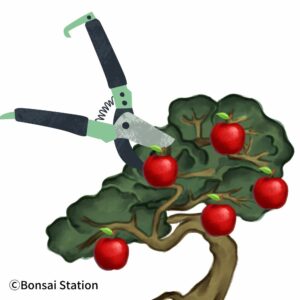
The cuttings of cotoneaster bonsai start to bloom and bear fruit as fast as in the second year. Unlike other bonsai species whose flowers and fruits have to wait for at least a few years, all the new buds of the cotoneaster cuttings that come out of the branches include flower buds, and all the flowers bear fruits.
But young, fruit-bearing trees grow very poorly because their energy is poured into the fruits. If you are in the process of training a cotoneaster bonsai tree, you should not let it bear fruit for three to four years after cutting. After enjoying some flowers, it is important to pick all the flowers and the fruits up to focus their energy on growing new branches and buds.
When the tree shape is almost formed, you can enjoy flowers and fruits. At that time, the tree builds up enough strengths. Adequate watering and fertilizing can get you a lot of fruit and you do not need fruit thinning as the tree does not weaken much from bearing fruits.
Styling
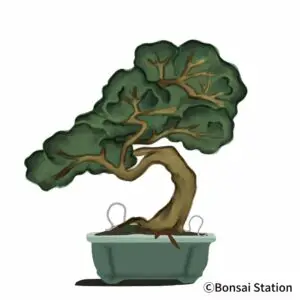
Secure the tree using wires/strings.
Cotoneaster bonsai trees can be styled to your liking. They are strong and can withstand hard pruning and wiring.
That said, as their tree bark lacks character, it is best to show the surface roots and trunk pattern as much as possible. Formal upright and (semi) cascade styles are good choices. Growing on the rock might be interesting, too.
Wiring
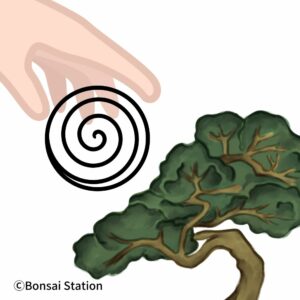
Wiring is best done in mid-spring until late May. As cotoneaster bark is rather soft and can be damaged by wiring, it is wise to wrap the wire with a cloth or strings for protection in advance.
That said, twigs and thin branches can be wired at any time during the year except in winter since the branches are flexible and elastic.
Infestation

Fire blight (caused by bacteria) and root rots (caused by fungi) are common diseases for cotoneaster. Chemical fungicide can be used for fire blight prevention and control.

